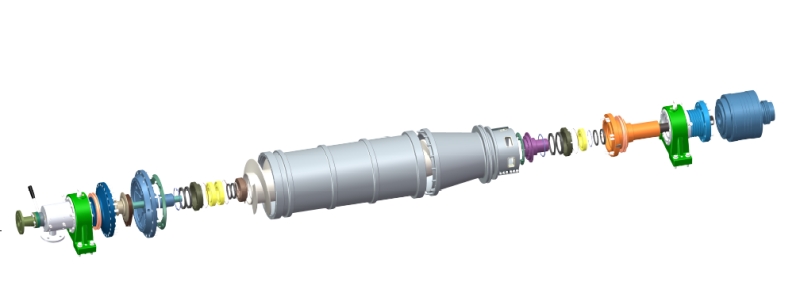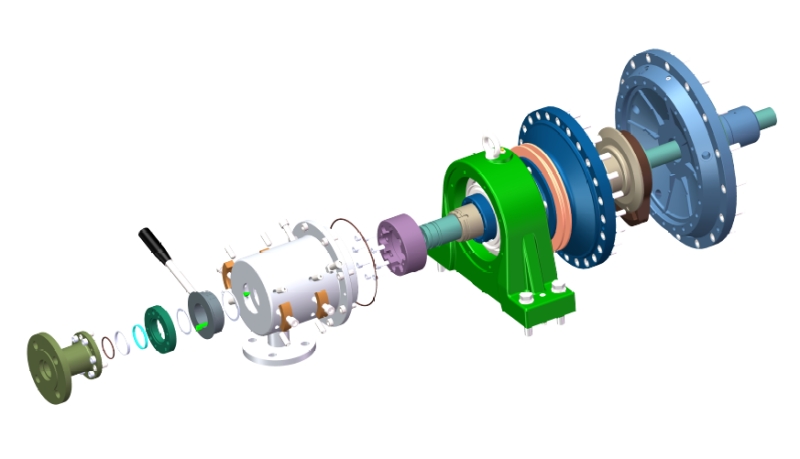GN China
- Phone:+86-13731500403
- Fax: +86-316-5276997
- Email: sales@gnseparation.com
- Location: Beijing,China
GN 3 phase decanter centrifuge is mainly designed for Solid-liquid-liquid three-phase separation of materials.With our over 10 years of experience in the separation industry, it is the most advanced type machine for 3 phase separation. It is designed for 24 hours continuous and smooth operation throughout the day. It is mainly composed of driving system, decanter bowl, screw conveyor inside the bowl, cover box, skid and VFD control panel.
To ensure that the separation process can take place, the solid phase must be the specifically heaviest phase and the two liquid phases must have different densities.The main difference between the 2 phase decanter and 3 phase decanter is that the 3 phase decanter not only separate the solids but also separate two phase of the liquid.
GN 3 phase decanter is widely used for oil , water, solids separation industry.

The three-phase decanter centrifuge operation is based on the principle of sedimentation, that is, solid particles with specific liquid weight precipitate in a predetermined time. This principle can also be applied to two immiscible liquids with different specific gravity. When the material enters the high-speed rotating drum, the material rotates synchronously with the drum. Because of the different specific gravity, the centrifugal force is different. The solid particles with the larger specific gravity are subjected to the greatest centrifugal force, followed by the heavy phase liquid (such as water) and the light phase liquid (such as oil). So the centrifugal force is becoming less from outside to inside according to the magnitude of centrifugal force. A concentric solid layer and two liquid layers are formed. Solids are pushed out by the screw conveyor, and liquids are removed from their respective nozzles. Therefore, the application of three-phase decanter centrifuge can not only separate the solid in the material, but also separate the two-phase liquid with different specific gravity in the material, that is, Solid-liquid-liquid separation can be achieved.
| Model | GNLWS-364 | GNLWS-454 | GNLWS-554 |
|---|---|---|---|
| Type | Continues Oil / Water / Solids Separation | ||
| Bowl Dia | 360mm | 450mm | 550mm |
| Bowl Length | 1567mm | 1947mm | 2347mm |
| Capacity | 5 m3/h | 10 m3/h | 15m3/h |
| Max Speed | 3986 RPM | 3452 RPM | 3123 RPM |
| Max G Force | 3200 G | 3000 G | 3000 G |
| Diff. Speed | 0-30 RPM | 0-30 RPM | 0-30 RPM |
| Main Drive | 22/30 KW | 37/45 KW | 55/75 KW |
| Back Drive | 7.5 KW | 11/15 KW | 18.5/22KW |
| Lubrication | Grease | Grease | Oil Pump |
| Oil Pump Size | N/A | N/A | 0.37 KW |
| Feed Material | Solids Less 10% and Particle Size less than 2mm | ||
| The above specification and parameters for reference only. | |||


An adjustable impeller discharges the "heavy" liquid phase. Furthermore, the operator can use the adjustable impeller to adjust the pond depth of the heavy liquid without difficulty during ongoing operation. According to the Proportion of two different phase, An adjustment mechanism causes the position of the impeller to change, thus changing the separation line of the liquids. The process engineering results can thus be influenced so as to achieve the required separation result.